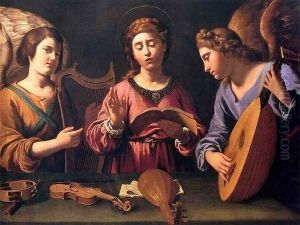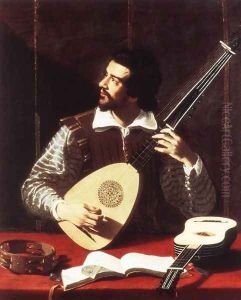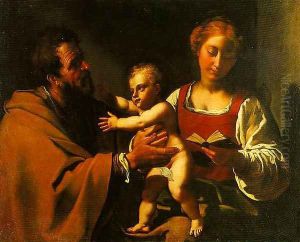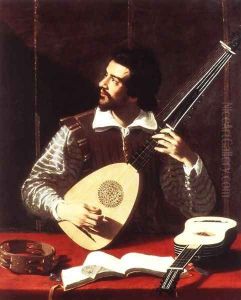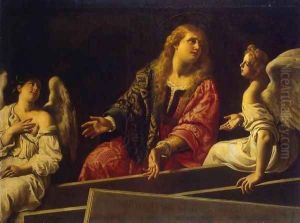Antiveduto Gramatica Paintings
Antiveduto Gramatica was an Italian painter of the early Baroque period, born in Siena in 1571. His work, primarily focused on religious themes and portraits, is noted for its expressive realism and attention to detail, characteristics that positioned him as a notable figure in the transition from the Mannerist to the Baroque style. Despite his significant contributions to the art world, Gramatica's life and work have not received the same level of scholarly attention as some of his contemporaries.
Gramatica moved to Rome at a young age, where he would spend the majority of his career. This period was marked by a vibrant artistic scene, fueled by the Catholic Church's Counter-Reformation, which sought to commission works that were emotionally engaging and doctrinally clear to counteract the Protestant Reformation. In Rome, Gramatica became associated with prominent artists of the time, including Caravaggio, whose influence is evident in Gramatica's use of chiaroscuro - the dramatic use of light and shadow to achieve a sense of volume in modeling the figures. However, Gramatica's work retained a distinctiveness through its softer transitions and a more delicate handling of color.
Throughout his career, Gramatica received commissions from several important churches and patrons in Rome, contributing to the city's artistic and architectural renewal. His works include altarpieces, frescoes, and portraits, the latter of which are particularly valued for their psychological depth and sensitivity to the character of the sitter. Despite the apparent influence of Caravaggio, Gramatica's portraits and religious scenes often exhibit a gentler, more lyrical quality, distinguishing his style from the more dramatic and intense works of his contemporaries.
Antiveduto Gramatica died in Rome in 1626. His legacy, though overshadowed by the towering figures of Baroque art like Caravaggio, Bernini, and Rubens, remains significant for art historians studying the period. His contributions to the development of Baroque painting, particularly in the realm of portraiture and religious art, continue to be recognized for their technical skill and emotional depth. Gramatica's work is preserved in several major museums and churches in Italy and around the world, offering a glimpse into the rich tapestry of early Baroque art.
